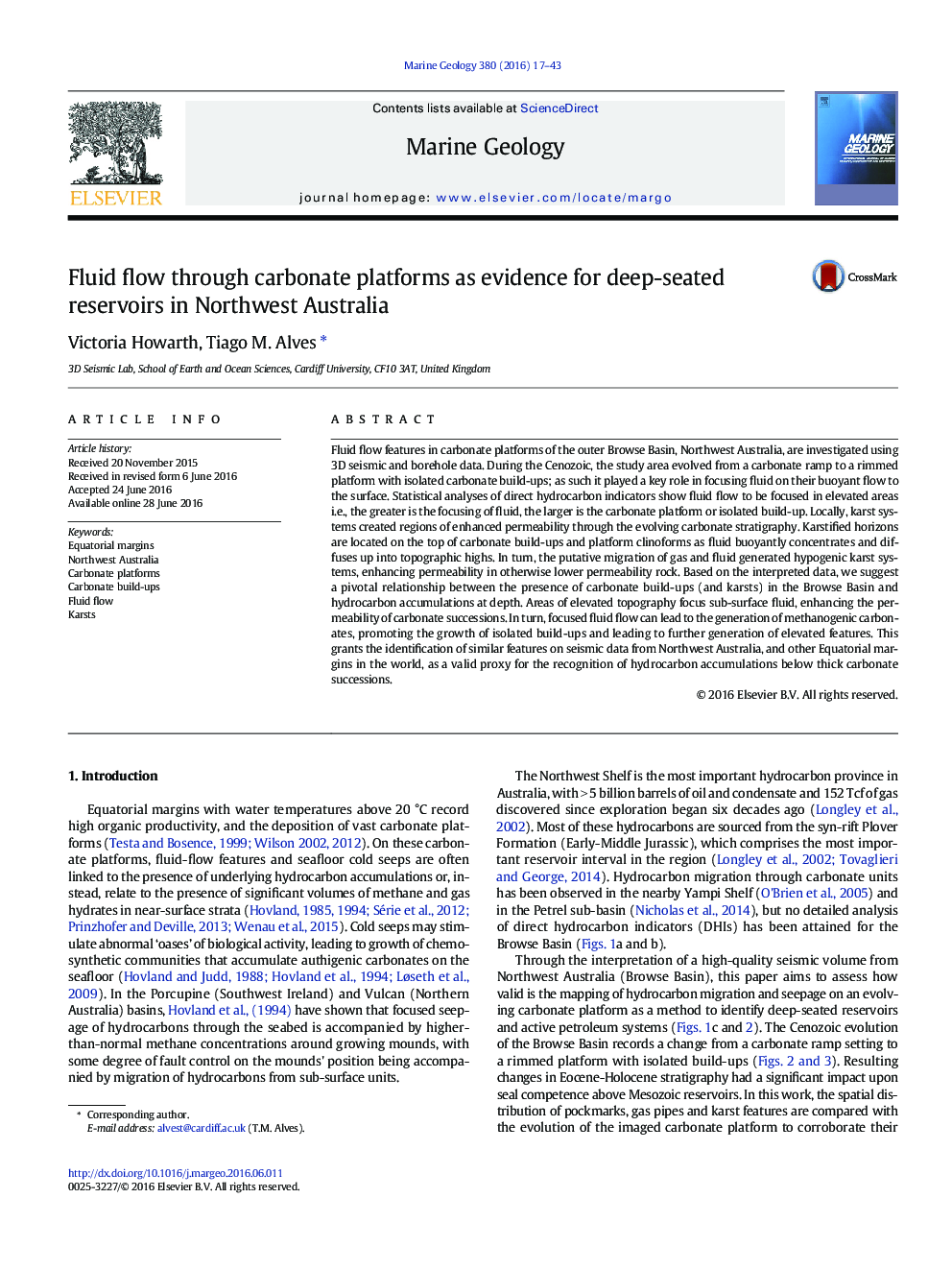| Article ID | Journal | Published Year | Pages | File Type |
|---|---|---|---|---|
| 6441282 | Marine Geology | 2016 | 27 Pages |
â¢Carbonate successions played a key role in focusing fluid flow.â¢Karst systems created regions of enhanced permeability.â¢Statistical analyses of DHIs show fluid flow to be focused in areas of elevated topography.â¢The larger the carbonate platform, or isolated build-up, the greater the focusing of fluid.â¢A relationship exists between fluid-flow features and hydrocarbon accumulations at depth.
Fluid flow features in carbonate platforms of the outer Browse Basin, Northwest Australia, are investigated using 3D seismic and borehole data. During the Cenozoic, the study area evolved from a carbonate ramp to a rimmed platform with isolated carbonate build-ups; as such it played a key role in focusing fluid on their buoyant flow to the surface. Statistical analyses of direct hydrocarbon indicators show fluid flow to be focused in elevated areas i.e., the greater is the focusing of fluid, the larger is the carbonate platform or isolated build-up. Locally, karst systems created regions of enhanced permeability through the evolving carbonate stratigraphy. Karstified horizons are located on the top of carbonate build-ups and platform clinoforms as fluid buoyantly concentrates and diffuses up into topographic highs. In turn, the putative migration of gas and fluid generated hypogenic karst systems, enhancing permeability in otherwise lower permeability rock. Based on the interpreted data, we suggest a pivotal relationship between the presence of carbonate build-ups (and karsts) in the Browse Basin and hydrocarbon accumulations at depth. Areas of elevated topography focus sub-surface fluid, enhancing the permeability of carbonate successions. In turn, focused fluid flow can lead to the generation of methanogenic carbonates, promoting the growth of isolated build-ups and leading to further generation of elevated features. This grants the identification of similar features on seismic data from Northwest Australia, and other Equatorial margins in the world, as a valid proxy for the recognition of hydrocarbon accumulations below thick carbonate successions.
